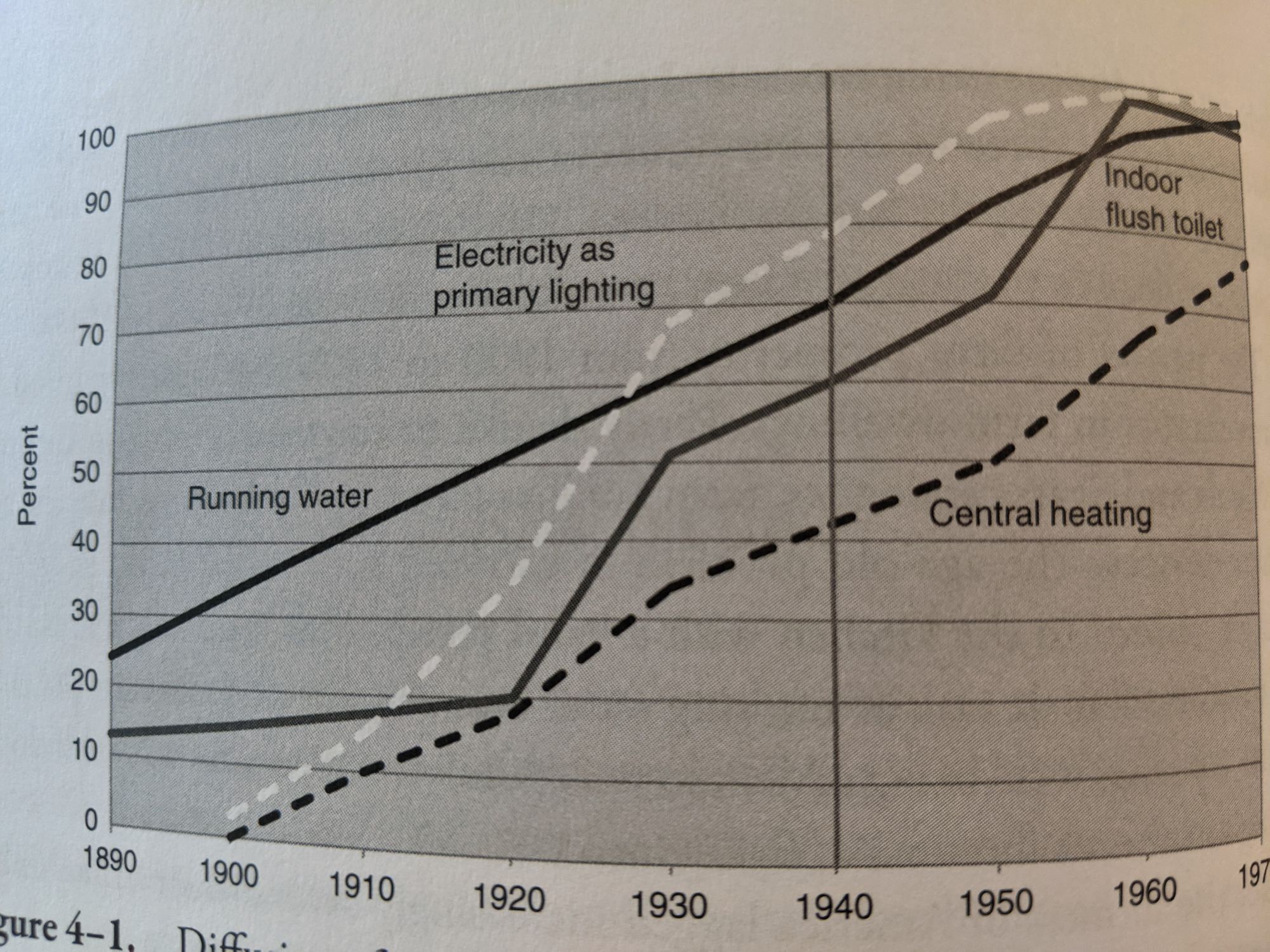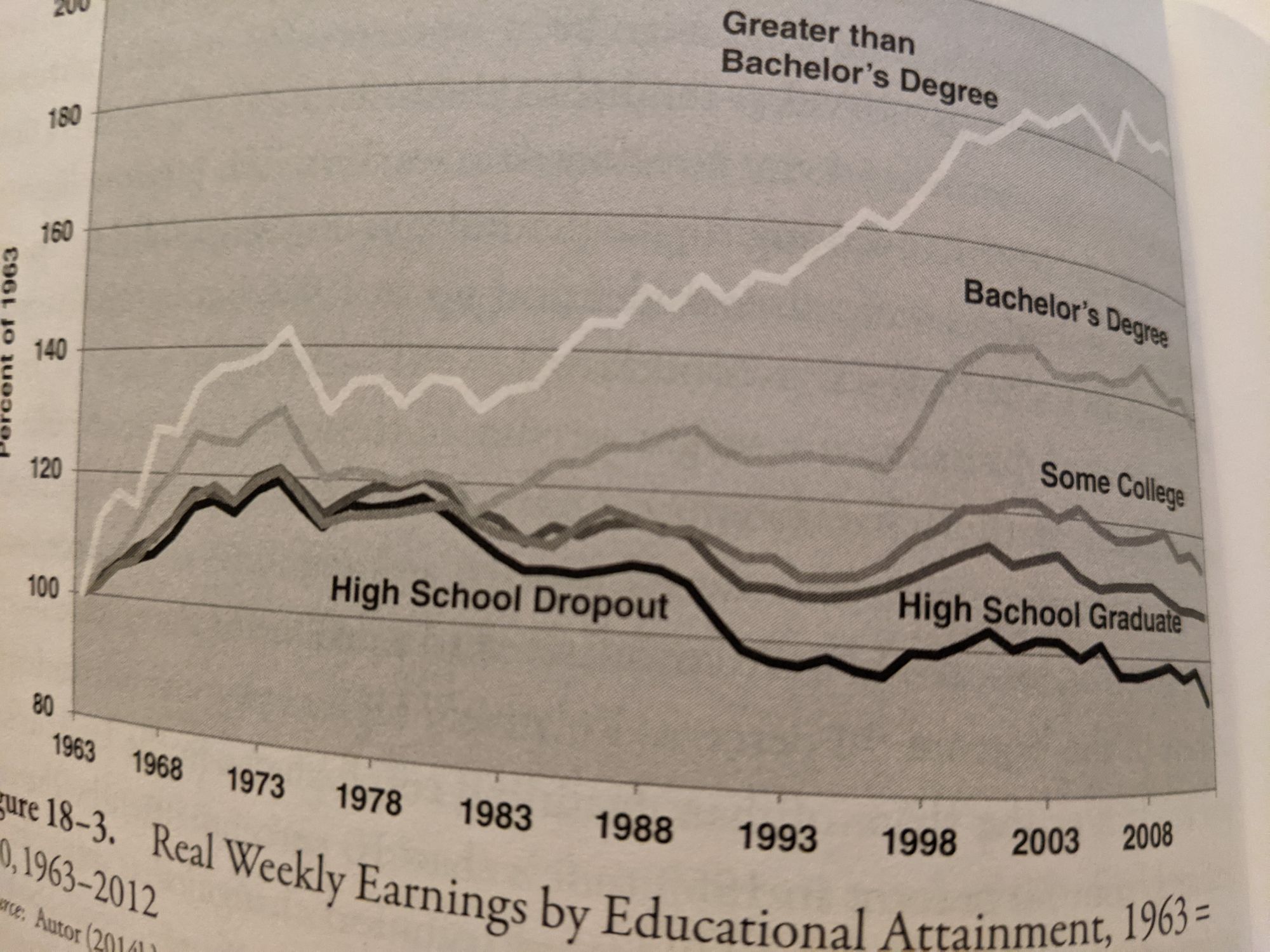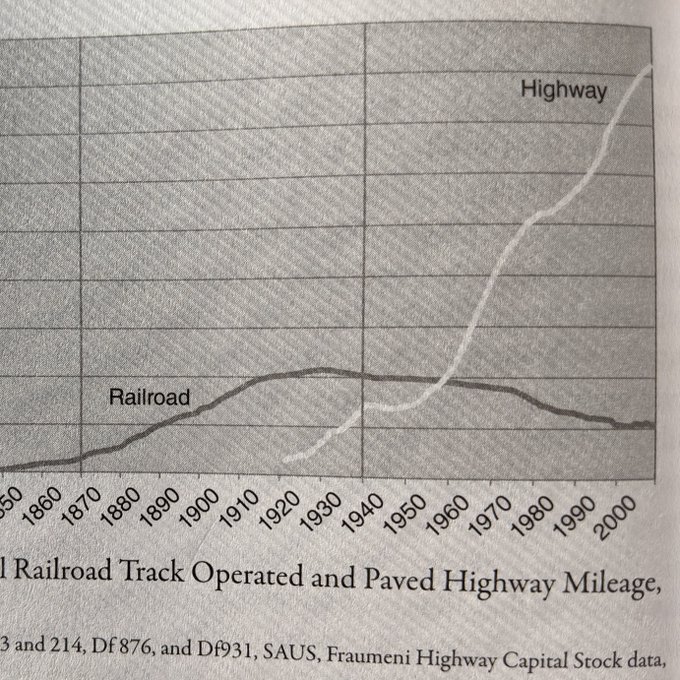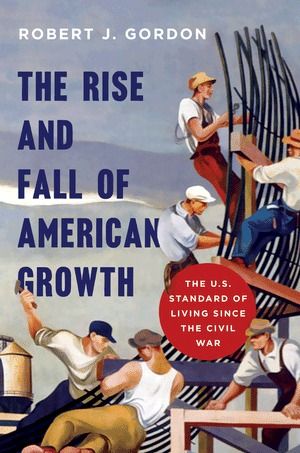This is an excellent book. The book is called The Rise and Fall of American Growth: The U.S. Standard of Living Since the Civil War.
You'll get most out of it, if you've read a handful of more optimistic technologist's book, as he lays out many of his points as counter-arguments to their points. Optimists claim that we are not seeing the IT technology reflected in GDP just because it is flourishing our information lives. Then Gordon goes onto how that's been always the case and that phenomenon has nothing new in IT. He extensively discusses about the topics on how milk was often contaminated before the standardization and food poisoning was regular event before the invention of fridge. The first produced car was not equipped with frontshield or seatbelts either. Those safety improvement does not appear in GDP in the same way IT's quality-of-life-improvement is argued as not being reflected. I agree with full nods that technologists and corporations are hyping the current .
It is no doubt a fun experience to read through the lives people had 100 years ago. People had to hustle for negotiation with local store owners every time until now-dying department stores came about 100 years ago. And urban pollution has been awlays there with horses killing people equally and spreading manure all over the place until cars took over.
And what a true innovation it was to have running water, sewage and electricity to run through every household. We take it for granted. But they were life-changing at the time that freed away the centuries of our accustomed lifestyles. And it was all done in over one generation.

3 major criticisms (because I love this book):
His main claim is American productivity started going up in 1870-1920, accelerated from 1920-1970, slow down from 1970-1994, slowly went up from 1994-2004, and slowed down again from 2004-2016. He mentions it'll continue to slow down in the near feture (~2040). There he mentions about the emerging technology such as gene editing and AI, where he dismisses them as non-impactful in just 5 pages. Come on. This book is 784 books. That's unfair. Furthermore, he dismisses the role of AI as it being a simple advertisement optimization. But in 2020 today, OpenAI recently announced modeling protein structure, that will tangibly affect the real economy in drug development. It seems he has failed to assess the technological impact just 4 years ahead of the book.
I happened to read this book right after Energy and Civilization by Vaclav Smil. While Gordon starts his history from 1870 American growth, Smil notes the modern growth starting from 1770 England when James Watt invented the steam engine. In that longer global analysis, you'll easily realize Gordon's timescale of IT too short. He shrugs its impact as trivial based on the previous 10 year data that happened to be slow. But looking at English modern history, the cycle goes through in the span of centuries. Concluding the technological impact just by analyzing the 10 year data is too shortsighted. At the end, I still prefer to follow the 50-year business cycle theory of technology lag.
Lastly, he does mention about the rising inequality. There he usess the word bottom 99% and bottom 90% interchangeably. I think he's intentionally trying to be provocative. In fact, the lives of top 1%, top10%, top 50%, and top 90% would be different. Even if the income of university graduates are not growing, their income would be still significantly better than the highschools'. He's an economist and he should be able to identify the groups properly instead of splitting them so conveniently. But it is concerning nevertheless the real income is not going up (declining for highschool graduates). I recommend Future of Capitalism if you want to read into that topic with more political take.

Highway Rush of the 20th Century
I do want to conclude the last mark with highway case study for tech entrepreneurs.
This is the graph fo spread of highway in the US 20th century.
It took over railroads at a hyper rapid pace. What can we learn?

- You'd have made a solid career choice working on cars in 1950. The opposite is true for the railroad operator. That's despite what your parents would have told you.1
- Highways started only 20 years after Ford's Model T. Self driving cars will come out in the 2020s. We'll wait for 2050 to start seeing a change in our cities.1
- If you lived in the 1940s, you'd hear cynics disclaiming cars and highways were just fads. "It'd never be as big as trains," they say in the face of a decade of highway stagnation.1
- Useful infrastructure continues to expand beyond 90 years. Internet improvement like 5G will continue on for the next 50 years.1
- Convenience over communal choice. Always. You ride cars from the house to the destination. Privacy is protected. No timetable required. That freedom is more important even if it means you have to drive the vehicle yourself.1
- Highway revolts broke out in the 60s, 70s (ie: Unabomber). That's when highways took over railroads. No highway activism exists today even though the development is happening at the same rate. Very few anti-tech activisms survive across generations.

